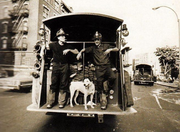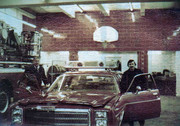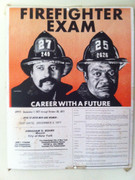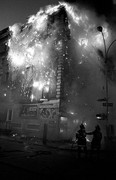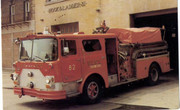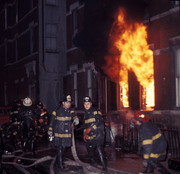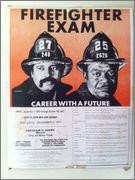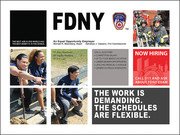"fdny1075k", thank you for posting these photos onto "My Younger Buff Years".
1) Riding the back step of the Engine Co back in those busy days were the way it was with 3/4 boots rolled down. The Engines were often referred to as "Covered Wagons" because of the cover over the hose bed and back step. Objects were sometimes thrown at FDNY members during those days so it gave the members a little bit more protection. In fact, as far as I can remember, it was the FDNY that first came out with the covered wagons. Before that, the entire rear hosebed had been open and exposed.
2) FDNYs 4th Battalion on the lower East Side. It was one of the busiest battalions for runs and workers during those very busy years. Companies like Eng 28/Lad 11, Eng 17/Lad 18 etc were always some of the busiest in the city. In fact, I believe there were several years when Engine 28 was the busiest, or very close to it. The streets in that area closely resembled those of the arson plagued area of the South Bronx. Those War Years Firefighters in the Fourth Battalion were holding their own to the best of them.
I think it is mentioned somewhere on this thread where a firefighter from Ladder Co 18 was killed as he missed stepping into the bucket from a job. As he fell, the scums in the neighborhood found it somewhat entertaining. That's an example of the way things were back then in that neighborhood.
3) The poster is a recruitment ad from back in 1977. I believe it was the first test to be given after the layoffs of some FDNY members and the closing of some 50 companies. It was also a year of propbably the heaviest fire activity for the FDNY, including the huge Brooklyn Boro call in Bushwick and two weeks later The Blackout. I don't remember what firehouse that came from. That poster was in a glass case in front of the firehouse, and after the filing was over, I asked one of the guys if I could have it. I still have that poster today, some 35 plus years later.
The firefighters pictured in that poster are; Firefighter Frank Martinez of Ladder Co 27, and Firefighter Clyde Williams of Ladder Co 25.
The year was 1977. The 44 cal serial killer, Son of Sam, had been out there randomly shooting people. The FDNY had closed 50 companies. The Blackout of July 13th (?), 1977 was probadly the busiest 24 hour period for serious building fires in the entire history of the FDNY. And blocks of burned out buildings lined many streets throughout the city. I remember hearing it said that "The Bronx could not support itself and the services needed". I had never heard anything like that before.
These three routine photos of the FDNY back in those days are reminders of how things were. A major US city that often seemed like a third world country only a few miles from the very richest in the world. Three simple photos that probadly explain how a city was held together by a group of city firefighters that never gave up, despite the chaos surrounding them.


